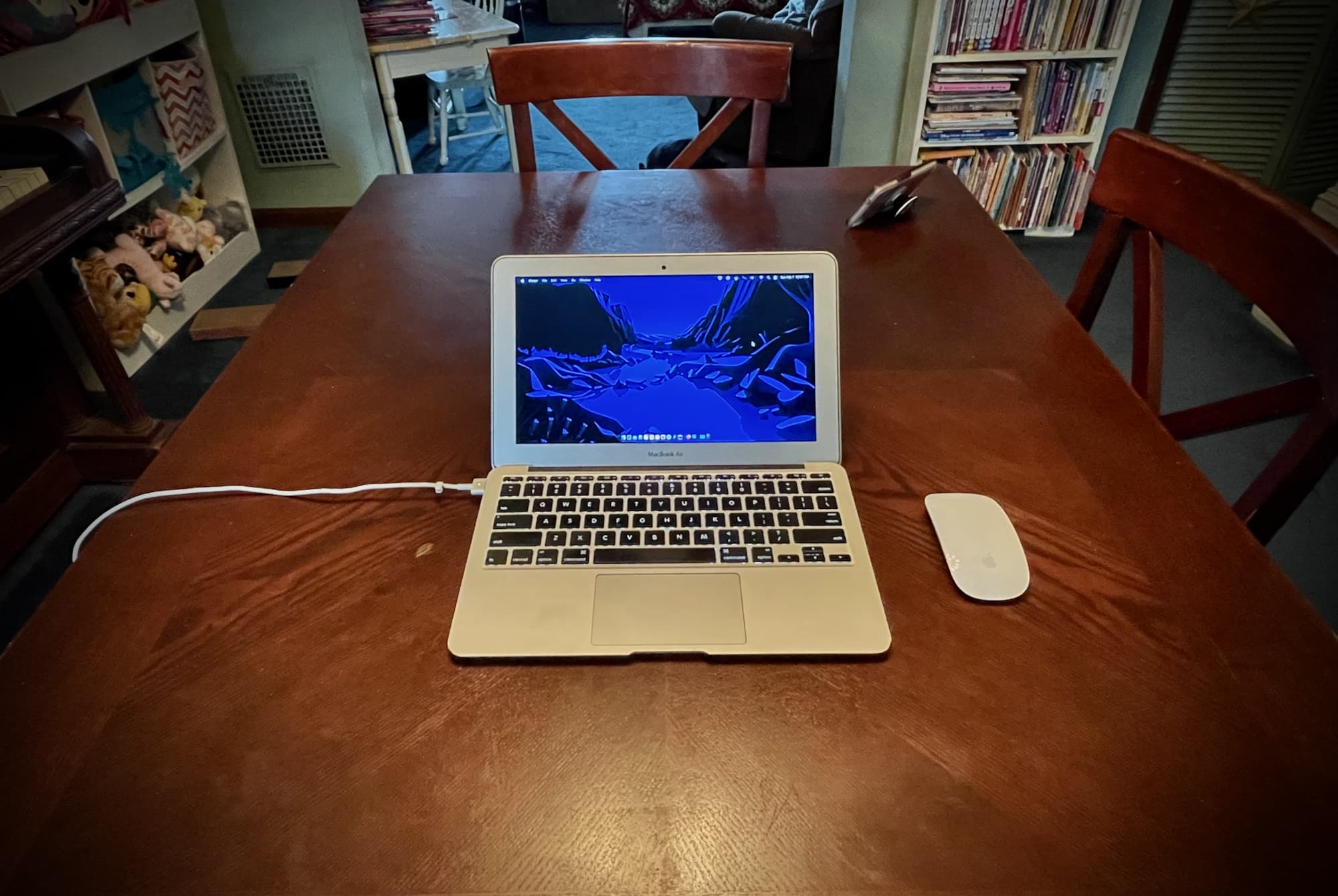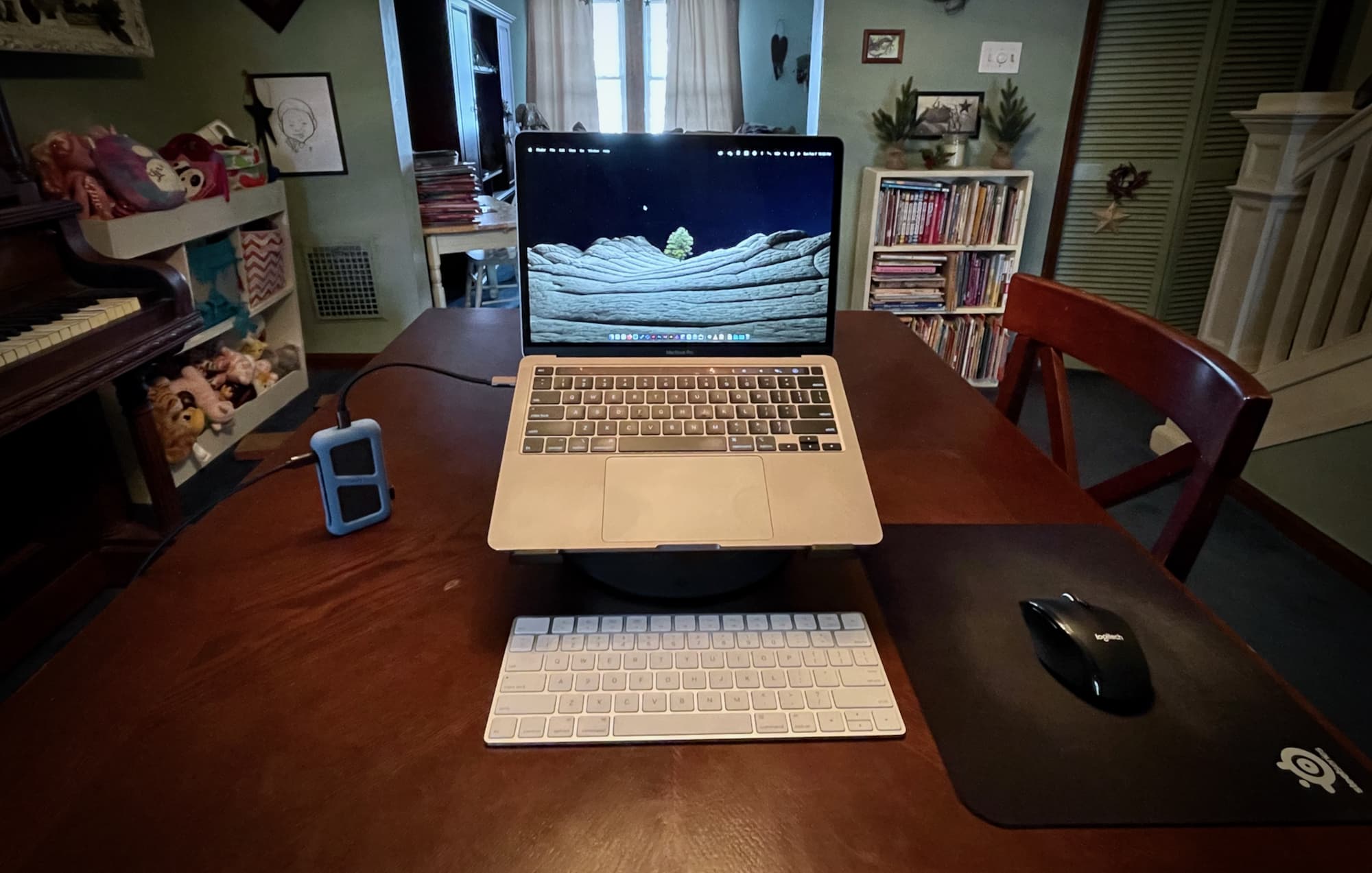How It Started

ARTICLE – Back in March of 2020 when Central Pennsylvania closed schools for two weeks in a “Stop the Spread” initiative, I wasn’t sure how long I’d have to work from home. I set up my own personal laptop — an aging 11” MacBook Air — and downloaded Adobe Creative Cloud and a few Office apps. At the time, it seemed likely that we’d be back in the office by April.
Only two weeks prior to that, we had just set up Office 365 for our company’s email and Office apps, and Teams for work communication. We also ordered new laptops for the entire company, other than the design department (myself included) who were still working on 27” iMacs. It was almost prophetic that these were the exact steps we needed to set up our workforce for extended working from home.
As the weeks turned into months, I realized that we might not be back in the office until much later in the year, or longer. I faced the problem of not being able to bring my work iMac home, as I didn’t have a good spot for it. It didn’t seem like I’d need to make drastic changes to my house, like clearing out a whole room to set up a home office, for example. So I put in a request for a much more capable laptop.
How It’s Going

The move from an old 11” MacBook Air to a 13” MacBook Pro with a Retina screen was amazing. While the Air was surprisingly capable at running apps like Photoshop and InDesign, the difference in upgrading to a Pro was, as you’d expect, staggering.
Over time, I also made some other improvements, and now my regular setup looks like this:
- 13” MacBook Pro
- Logitech M705 Mouse (with 3-year battery life) since my Magic Mouse was starting to die
- TwelveSouth MacBook stand, to raise the screen to a more comfortable height
- Apple Magic Keyboard (that I procured from my work iMac)
- Aukey FHD webcam, because the MacBook webcam is terrible, and I have to get on several meetings per week
- USB-C hub, because the MacBook only has 2 USB-C ports, something which Apple is actually fixing on their newer laptops
- An extra wall charger so I can move around the house without unplugging and dragging cables
- SteelSeries extra-large mousepad, because the wood finish on my table was starting to rub away from so much mousing
I still sit at my dining room table every day, but I’m able to move around the house and sit on a couch or recliner for less mouse-heavy tasks like web work and emails. I did get a thicker chair cushion, though.
With communication tools like Office 365, Teams, and Microsoft’s SharePoint file-sharing system, there’s a really good chance that remote work will become the norm for our company. When the lease on our office is up this year, it’s likely we’ll reduce the size of our floor space by 75%, saving tens of thousands of dollars a year. I have a feeling that a lot of other companies will do the same.
Be sure and check out the other WFH setup articles in this series.



Gadgeteer Comment Policy - Please read before commenting
I have two of that same USB hub, one for home and one for work. It is fantastic. One of my favorite things is how the USB C cable his removable so I could attach one a bit longer, which helps me hide all of the wires on my desk.
Agree with everything you said, Doug. In fact, I was in the process of reviewing that hub when I wrote this work from home piece, so that full review will be up soon! It’s such a great little hub, and absolutely necessary if you have some newer computer with USB-C-only ports.